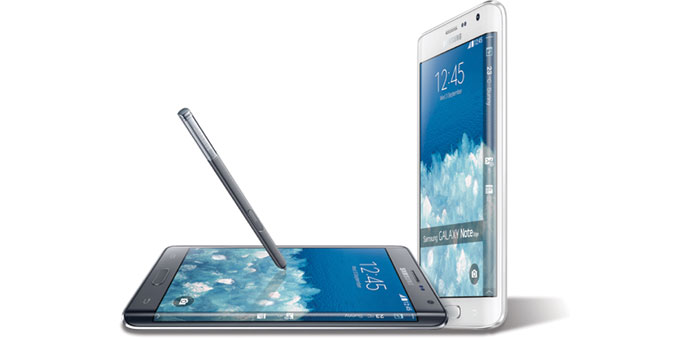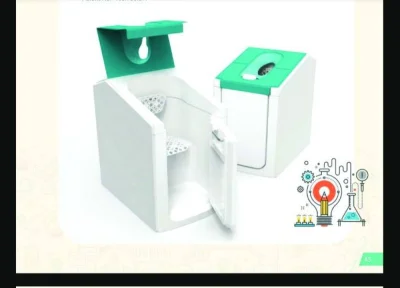techknow beat
by Bilal Iqbal
Last week this time, we were firmly entrenched in rumourland. The Note 4 will be like this, the iPhone 6 will have that, Motorola will do this, Sony will do that. Seven days later, we know exactly how the winter crop of digital mobile goodies stack up.
The IFA in Berlin — one of two biggest consumer electronic trade shows along with CES — and the 9/9 Apple event together have revealed what are certainly the strikers in the line-ups for their respective manufacturers (with only the rumoured Google Nexus 6 still lurking in the wild).
Most rumours ended up being rather spot on, with manufacturers offering little in terms of surprises to the consumers. Is it us or have these technology giants failed to keep their recent devices secret? Maybe it is the nature of the procedural upgrade cycles that phones have been in since the past few years, with it being easier than ever to predict what may end up coming in the next iteration of a flagship device. Or maybe keeping the devices secret to the extent that their predecessors were previously is just isn’t worth the associated costs and efforts. What we do know is that leaks keep hitting the mark more often than naught.
We have rounded up a list of new devices that piqued our interest in the past week. Most of these devices are sure to make their way to Qatar before winters roll in and will add to the multitude of options from which to choose. In time, we will give them their due space, but for now an overview, if you will:
Samsung Note 4 and Note Edge
Samsung came out guns blazing with its Note 4 and Note Edge siblings, alike in all respects save for a small strip of bended screen running along the sides of the Edge. This might, in fact, have been the first time this year that a major phone manufacturer has managed to actually pull off a small surprise. Sure, there were rumours of Samsung mulling a Note with a bended screen, but few were expecting it to release two Note variants.
The regular Note 4, as you would expect, comes will all bells and whistles you can possibly think of. QHD display? Check. 16mp camera module? Check. Optical Image Stabilisation (OIS)? Check. Removable battery? Check. Expandable storage? Check. Fingerprint reader? Check. Fastest available processor? Check (two variants in fact). Fastest GPU? Check (well, almost, if you discount the so-far unloved Tegra 4). It curiously did miss out on water proofing, but has just about everything else.
The Edge offers all the above, in addition to an edge that is covered in display. This opens the possibilities for all sorts of functionality, ranging from shortcuts to a readout display that can function as an extended notification strip. Other than that it comes with the Qualcomm Snapdragon 805 chipset and will not be offered with the Samsung-built Exynos 5433 chipset, unlike its sibling.
A word on the chipsets: the Snapdragon 805 is the fastest chipset being mass produced by Qualcomm right now. Its major improvement over the previous Snapdragon 801 chipset is the GPU, which is roughly 50% faster. However, the Exynos 5433 chipset, offered only in the plain Note 4, is marginally faster than Snapdragon 805 in processing and graphics. On the flipside, the Snapdragon 805 can theoretically achieve twice as fast 4G speeds as the Exynos (unlike last year’s Note 3 variants, both are 4G this time around). That said, both variants should be on par with each other in real life usage in any discernible way.
Sony Xperia Z3
Look at that spec sheet closely. No, seriously. I swear there are differences from the Z2. Yes, look at those dimensions. It is thinner, smaller. It is lighter too, at 153 grams compared to 163 grams, all the while keeping the same screen, camera and a very slightly smaller battery. That’s it? No, look closer. The processor’s being bumped from 2.3GHz to 2.5GHz. What else, you ask? That’s it, apparently.
Sony seem to have taken the idea of incremental upgrades to a whole new level of minor with the Z3, choosing to focus on refinements rather than upgrades. As such, they miss out on the Snapdragon 805 chipset (which comes with a much faster GPU) and a QHD display. In turn, they deliver a phone that is virtually indistinguishable from its predecessor. We suspect they saved the two obvious updates for the Xperia Z4, due, again, in six months. The compacter dimensions of the Z3 should make for better handling, though the variant to get will ultimately depend on pricing more than anything else.
Motorola Moto G
There was little that was wrong with the first generation of Motorola’s budget king and they have gone ahead and fixed that too. The second generation of Moto G gets a bigger back camera (8mp vs 5mp), bigger front camera (2mp vs 1.3mp), expandable storage and a bigger screen (5 inches vs 4.5 inches), all the while retaining the same price as its predecessor. It did not get bumped in the internal specs department, which means Motorola considers them good enough for the next Android update. This also means good news for the users of the original Moto G, who will not be forced to update their phones any time soon. The bump in screen size may not be to everyone’s liking, but the consumers seem to want bigger and bigger screens, so it is hardly a surprise that Motorola delivered.
Motorola Moto X
Due for a significant upgrade was the original Moto X, which could never quite make the impact its smaller sibling did. Maybe it was the not-so-top-end internals that prevented the Moto X from soaring, with Motorola instead choosing to put all its eggs in the premium experience basket. This time, however, it is not taking any chances. They will continue to provide the premium experience (with customisable back covers made from wood and leather and what not) while offering the latest internals. So you get a 5.2 inch screen with Full High Definition (FHD) display (not QHD, but still good enough), 13mp back camera, Snapdragon 801 chipset (again, missing out on the 805 variant with the much faster GPU, but certainly amongst the fastest for at least six more months). It does miss out on expandable storage, which is odd given the choice they made with the 2014 Moto G. Of greater concern is the rather small-sounding battery capacity: no other major Android phone in the market with such specs has just a 2300mah battery. Even HTC One M8, the closest, has a 13% bigger battery. Maybe Motorola have done a real good job with battery optimisations — reviews will tell. It may still be a compelling buy though if Motorola prices it right.
Apple iPhone 6, iPhone 6+
Apple held its own event on Tuesday, where it announced two new variants of the iPhone, both with bigger screens than before.
The iPhone 6 jumps from the 4 inches of the iPhone 5s to 4.7 inches (with 750 by 1,334 pixels display), while the 6+ takes an even bigger leap to 5.5 inches (Full High Definition display).
It would seem that by adopting a two-prong strategy, Apple has gone after the big-screen market while retaining its existing customer base, who would be much more comfortable with a smaller phone.
A jump of 0.7 inches on a phone though is still significant and could throw a user with small hands off base (an article in The Atlantic already questions if 4.7 inches isn’t a bit too big for women with smaller hands). The iPhone 5s, however, will continue to exist alongside the 6 and 6+ and serve people with smaller hands. It is powered by a decent chipset that should propel it smoothly along the curve for the time being, while the 4.7 inch model can serve as sort of an experiment for Apple to pin down the ideal small screen phone.
Another potentially controversial split in the two phones is that the iPhone 6 misses out on the Optical Image Stabilisation offered by the 6+. This could be a deal breaker for some, especially considering that Apple chose to stick to the 8mp back camera, which it has been offering since the iPhone 4s (with small incremental upgrades each year).
This year, the sensor size is slightly bigger, but whether it will be enough to match the picture quality offered by its Android rivals remains to be seen (the last year’s iPhone 5s barely kept with the Android competition, according to GSMArena’s camera shootout).
Expect to pay a premium if you plan to own an iPhone. The iPhone 6 will cost you roughly the same price as the iPhone 5s did at launch, while a comparable 6+ (in terms of storage space) will command a premium of US $100 (or QR400, give or take).
The author may be contacted at [email protected] or followed on Twitter at @tknobeat



